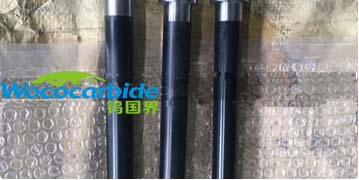

current position:Information and data>Alumina powder thermal spraying technology
For ordinary materials, their properties will change due to long-term exposure to certain specific environments and the chemical or electrochemical effects of surrounding media. For example, steel structures exposed to the outdoor atmosphere for a long time are easily corroded. . Therefore, in order to protect the surface of the material, it is often necessary to use thermal spraying technology to create a special working surface to achieve: anti-corrosion, wear-resistant, anti-friction, high temperature resistance, anti-oxidation, heat insulation, insulation, electrical conductivity, microwave radiation resistance and other series A variety of functions.

The specific process of thermal spraying technology refers to the use of a certain heat source to heat powder, filament or rod-shaped metal or non-metal coating materials to a molten or semi-molten state, and then use the power of the flame itself or an external high-speed airflow to heat it. It is atomized and spray-deposited on the surface of the pretreated base material at a certain speed, and is combined with the base material. Compared with other surface engineering technologies, the outstanding features of thermal spray technology are:
①The temperature range of the heat source is very wide, so the coating materials that can be used for spraying include almost all solid engineering materials, such as metals, alloys, ceramics, cermets, plastics and their composites;
②The degree of heating of the substrate during the spraying process is small and can be controlled, so it can be sprayed on various materials, which has little effect on the structure and performance of the substrate;
③The equipment is simple and the operation is flexible. It can not only spray large-scale components on a large area, but also spray on designated parts; spraying can be carried out in the factory room or on the outdoor site.
Among the optional spraying materials, ceramic materials have become a commonly used spraying material in thermal spraying technology due to their high melting point, high hardness and good chemical stability. Commonly used are aluminum oxide, titanium oxide, chromium oxide, Tungsten carbide, chromium carbide, silicon carbide, titanium nitride, silicon nitride, etc., are mainly used for corrosion, oxidation and wear protection of components. Among them, alumina is the most widely used high melting point oxide material. Its specific application in the field of thermal spraying can be seen below: Alumina Overview Alumina is rich in natural resources, low in price, and has many excellent properties. , its melting point is 2050 ℃, it is white, and there are many kinds of isomorphous crystals. Common ones are γ-Al2O3, δ-Al2O3, θ-Al2O3 and α-Al2O3. γ-Al2O3 is a low temperature form of alumina crystal. It is a cubic crystal form with a density of 3.47g/cm3. Above 1200℃, it begins to transform into high temperature α-Al2O3, and the transformation is unidirectional. Volume shrinks by 13%. α-Al2O3 is the most stable structure among the various variants, its stable temperature can reach the melting temperature, its density is 3.95g/cm3, and its crystal form is a hexagonal structure.
Alumina has excellent mechanical and chemical properties under certain high temperature conditions. It is insoluble to inorganic acids and salts after fully sintered; it has strong resistance to hydrogen fluoride and good corrosion resistance to sodium hydroxide, sodium carbonate, molten glass, etc. It has strong anti-corrosion effect of gases other than fluorine at high temperature of 1700~1800℃; it can be used in oxidizing atmosphere or strong reducing atmosphere below 1900℃, and can be used for a short time at 1950℃. Application of Alumina Powder in Thermal Spray Field Using nano-sized powder as raw material cannot be directly used for spraying. In order to solve this problem, the nanoparticles need to be reprocessed to form spherical micron-sized particles with nanostructured features and improve the flowability of the particles. When plasma sprayed, the molten particles undergo impact on the substrate, spread out, spread out, and solidify into quasi-circular flakes. Droplets of molten particles impinge on the substrate into a disk shape, the exact shape of which is determined by surface tension, density, viscosity, and the velocity of the droplets. This process takes a very short time to form a coating with small flakes superimposed in a layered structure. Due to the short time from collision to solidification, the molten particles cannot reach the corners of the previously spread flakes, and pores must appear in the coating.
Hot information

